Pawscessories is reader-supported. When you buy via links on our site, we may earn an affiliate commission at no cost to you.
Learn more.
If you are reading this, chances are you’ve noticed black spots or blackheads on your dog’s nipples. While they may seem alarming, they are actually quite common and usually aren’t cause for concern.
However, there are definitely some dangers and things to look for to ensure your dog’s nipples are healthy.
In this article, we will cover everything you need to know about black spots and blackheads on dog nipples – what they are, why they happen, when to be concerned, and how to get rid of them. We’ll also answer some of the most frequently asked questions about this topic.
Let’s dive in.
Table of Contents
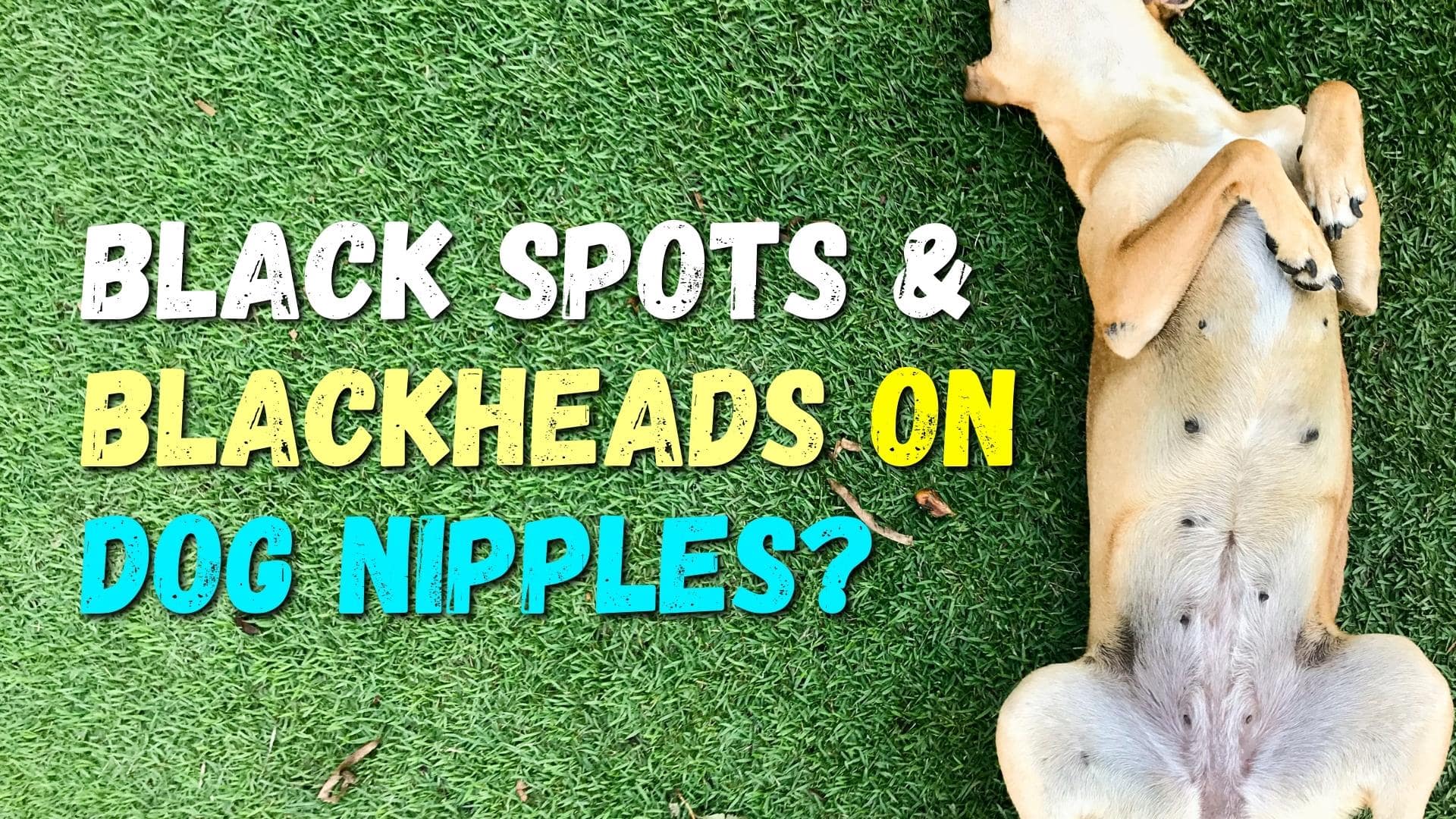
What Are Black Spots Or Blackheads On Dog Nipples?
Black spots or blackheads on dog nipples are usually just clogged hair follicles. There is an overproduction of sebum, which is an oily substance that protects and lubricates the skin. When there is too much sebum, it can cause clogs from debris or dirt filling up the follicle.
This then turns into a black spot or blackhead on the dog’s nipples. It’s very similar to how humans get blackheads on our faces.
However, there can be a difference between some black spots and blackheads. Sometimes dogs can develop something called papillomas, which are benign (non-cancerous) growths caused by a virus. These usually look like warts and can grow on the skin, in the mouth, or around the nipples.
Papillomas are not usually caused for concern, but if you notice any growths on your dog, it’s always best to consult with your veterinarian to be sure. Black spots could also be signs of more serious medical conditions such as endocrine diseases or mammary tumors.
Is It Normal To Have Black Spots On Their Nipples Or Skin?
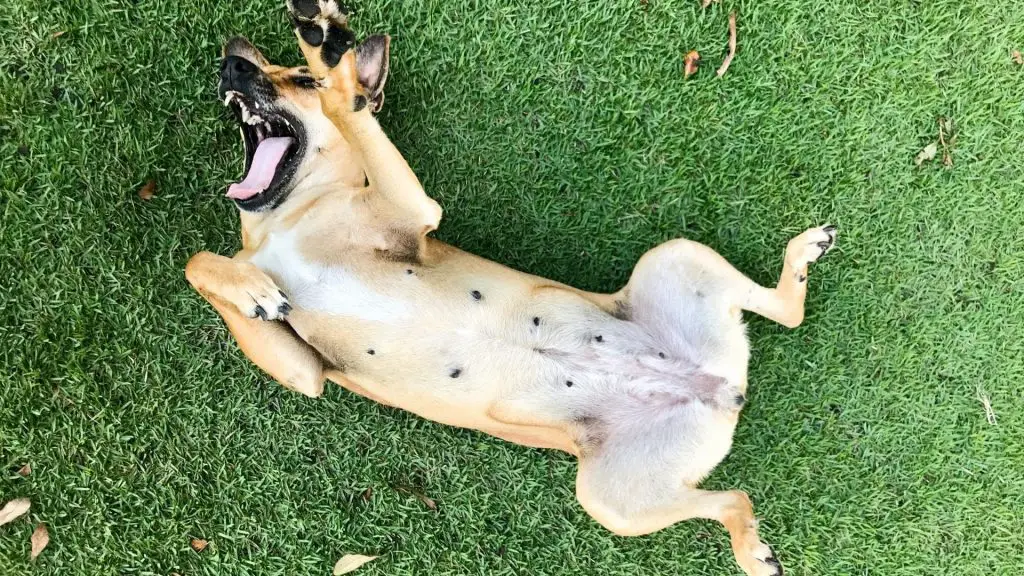
While black spots may look strange, they are quite common and usually aren’t anything to worry about. In most cases, these black spots are just blackheads and will go away on their own.
Hairless dogs and dogs with inverted nipples are the most prone to developing black spots or blackheads.
However, not all black spots on nipples are the same. Therefore, it’s important to identify what is normal and what isn’t to ensure your dog’s nipples are healthy.
Here are some things to look for:
- Color: Most blackheads are going to be just that – black. However, if you notice any redness, inflammation, or swelling, this could be a sign of an infection.
- Size: Generally, blackheads are small – about the size of a pencil eraser. If you notice any that are larger than this or are growing in size, it’s important to have them checked out by a vet.
- The number of black spots: A few black spots here and there is usually nothing to worry about. However, if you notice a sudden increase in black spots or blackheads, it’s important to have your dog checked out by a vet.
- Discharge: Black spots or blackheads that are accompanied by any type of discharge – pus, blood, or otherwise – should be checked out by a vet immediately.
- Pain: Blackheads that are painful or seem to be bothering your dog in any way should also be checked out by a vet.
If you notice any of the above, it’s important to have your dog seen by a veterinarian to make sure the black spots are not anything more serious than just blackheads.
What Causes Dogs To Get Black Spots Or Blackheads On Nipples?
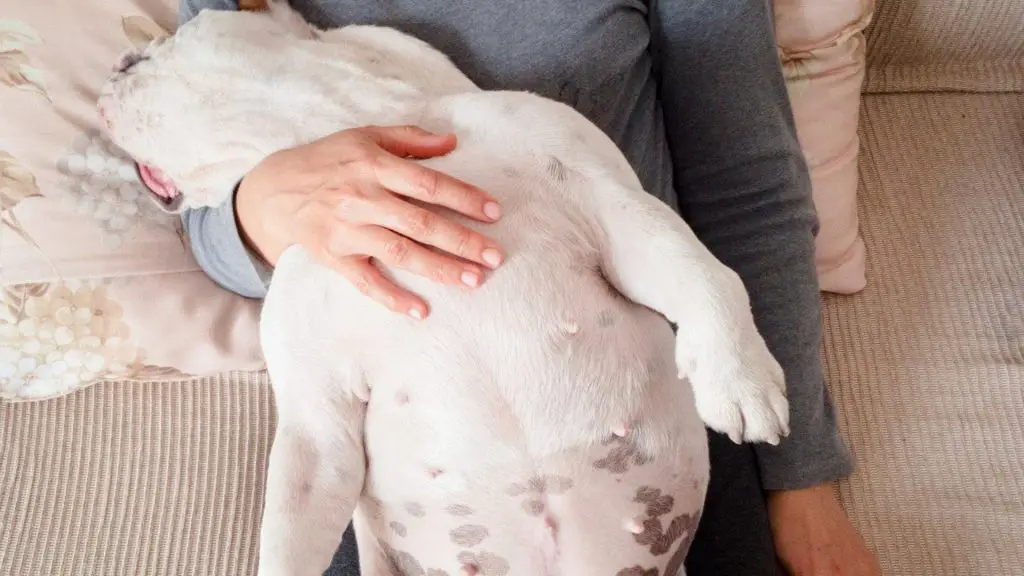
Your dog might have blackheads on their nipples for several reasons. Here are the most common reasons for blackheads and black spots show up on dog nipples:
Food & Diet
A diet high in fat can cause an overproduction of sebum, which can lead to clogged hair follicles and blackheads. In addition, a diet that is lacking in essential nutrients can also lead to blackheads and other skin problems.
Making sure your dog is drinking water and getting all the essential nutrients they need is a way to prevent blackheads from developing.
Hormones
Hormonal changes – such as during puberty or pregnancy – can also cause an increase in sebum production, leading to blackheads. This slight imbalance of hormones can cause all kinds of skin problems, not just blackheads. It’s the same reason humans that are stressed and hormonal can get acne.
Dirt & Bacteria
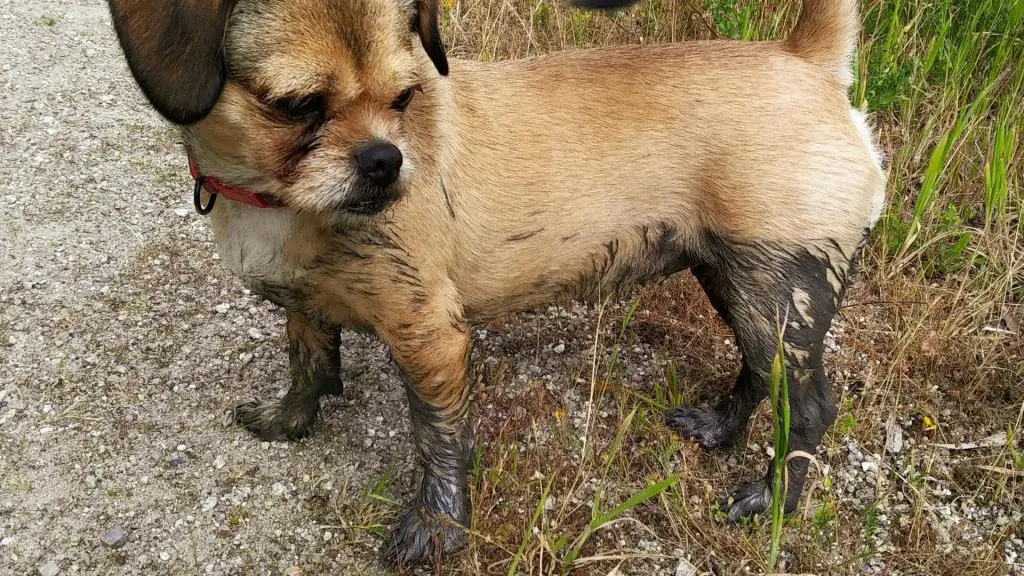
Dirt and bacteria commonly cause blackheads on dog nipples. When dirt and bacteria build up on the skin, they can clog pores and lead to blackheads. This is why keeping your dog’s skin and coat clean is important!
Lack Of Grooming
Not properly grooming your dog can also lead to blackheads. This is because hair follicles become clogged with dirt and bacteria when they are not regularly cleaned.
In addition, not properly grooming can also lead to mats and tangles, which can further irritate the skin and cause blackheads.
However, blackheads can also form on a dogs nipples because the dog is having difficulties grooming themself. They may have fur that gets in the way so their nipples are more prone to becoming dirty.
Health Conditions
In some cases, dogs with black spots on their nipples don’t have blackheads. Instead, these black spots can signify a more serious health condition that masks the look of a black head.
In addition, some health issues could also cause your dog’s nipples to produce more blackheads.
Some common health conditions that can cause black spots or blackheads on a dog are:
- Papillomas: Papillomas are benign growths that can show up on a dog’s skin. They are most commonly seen on the lips but can also appear on the nipples.
- Mastitis: Mastitis is a bacterial infection of the mammary gland. It is most commonly seen in nursing mothers but can also occur in intact females.
- Bacterial Infections: Bacterial infections can cause black spots and blackheads on your dog’s skin. The most common type of bacterial infection affecting dogs is pyoderma, a bacterial infection of the hair follicles.
- Endocrine diseases: Conditions such as Cushing’s disease or hypothyroidism can cause various skin problems, including black spots on the nipples.
- Cancer: While it is not common, black spots on the nipples can sometimes be a sign of cancer. If you notice any changes in your dog’s nipples – such as size, shape, color, or texture
- Mammary tumors: Mammary tumors are growths that develop in the mammary gland. They can be benign or malignant and usually occur in older, intact females. They can start as tiny black dots/spots on a dog’s nipples a slowly grow more prominent.
Flea Dirt
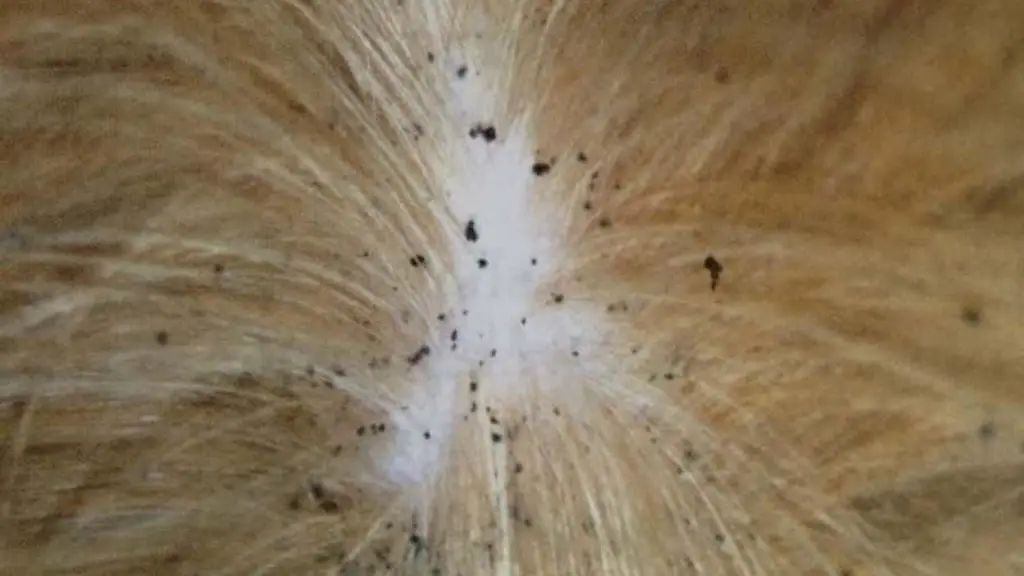
This next reason a dog gets black spots might seem surprising. Many people often mistake flea dirt for blackheads around a dog’s nipples.
It can appear like little black spots around the nipples, but it’s actually just flea dirt.
Flea dirt is the feces of fleas. And while it’s not harmful to your dog, it can be a sign that there are fleas present on your dog.
7 Ways To Get Rid Of The Black Spots On My Dog
Assuming the black spots around your dog’s nipples are just blackheads, there are a few things you can do to get rid of them.
Here are seven ways to get rid of blackheads on your dog:
#1 Cleansing
The first step is to cleanse the area around your dog’s nipples. This will help remove any dirt, bacteria, or other irritants that may be causing the blackheads. You can use a mild shampoo or soap to do this. Just ensure you rinse the area well afterward so no irritants are left behind.
Important note: Do not use human skin care products on dogs. They are designed for humans, not canines.
#2 Topical Steroid
If the blackheads are severe, your veterinarian may prescribe a topical steroid to help reduce inflammation and swelling.
Topical steroids can be in the form of creams, ointments, or gels. They are typically applied to the affected area two to three times per day and are designed specifically for dogs.
#3 Leave Them Be
Yep, you read that right. Sometimes, the best thing you can do is leave the blackheads alone. This is because picking or squeezing them can cause more irritation and inflammation.
Picking or squeezing blackheads can also lead to infection and more problems. So aside from cleaning them, it’s best to leave them alone.
#4 Benzoyl Peroxide
Benzoyl peroxide is a common over-the-counter acne medication that can be used to treat blackheads in dogs. It works by killing the bacteria that cause acne and by helping to dry up excess oil.
Benzoyl peroxide typically comes in gel or cream form and is applied to the affected area. However, this should be used sparingly as it can dry the skin. You should talk to a vet before using this on your dog.
#5 Antibiotics
In some cases, antibiotics may be necessary to clear up the blackheads. This is usually the case if the blackheads are caused by a bacterial infection.
Antibiotics can be in the form of pills, liquids, or ointments. They are typically given for two to four weeks, depending on the severity of the infection.
#6 Special Shampoo
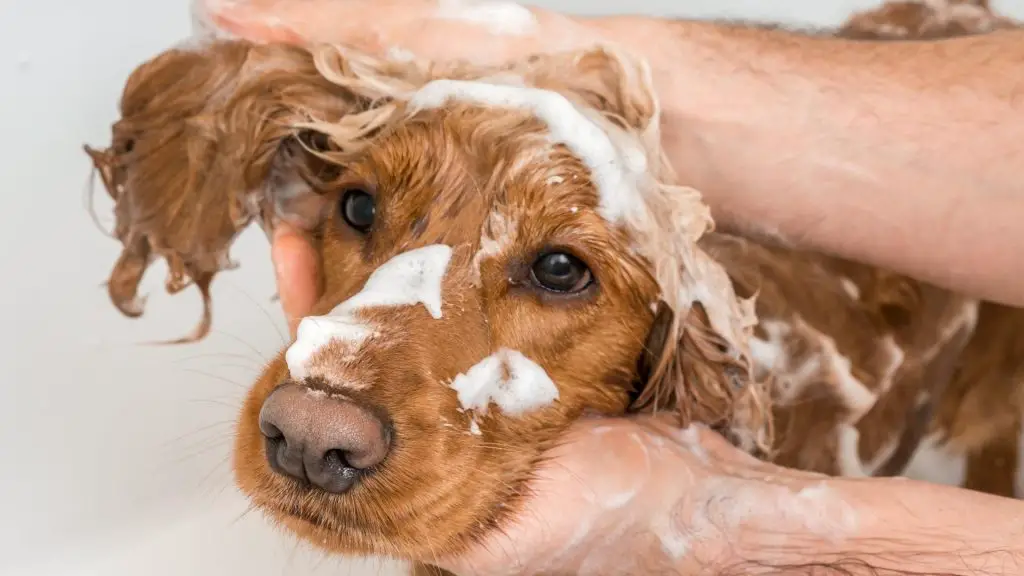
There are a number of medicated shampoos that can be used to treat blackheads. These shampoos typically contain ingredients such as benzoyl peroxide, salicylic acid, or sulfur.
They work by killing the bacteria that cause acne and by helping to dry up excess oil. They should be used two to three times per week for the best results.
Special shampoo can be found at most pet stores or online. However, it is important to talk to a vet before using any new products on your dog.
#7 Keep Them Clean
One of the best things you can do to prevent blackheads is to keep the area around your dog’s nipples clean. This means washing them regularly with a mild shampoo or soap.
It is also important to remove any irritants, such as fleas that may be causing the blackheads. Keeping the area clean will help reduce the chances of blackheads returning.
When To Worry About the Black Spots On A Dog’s Nipples
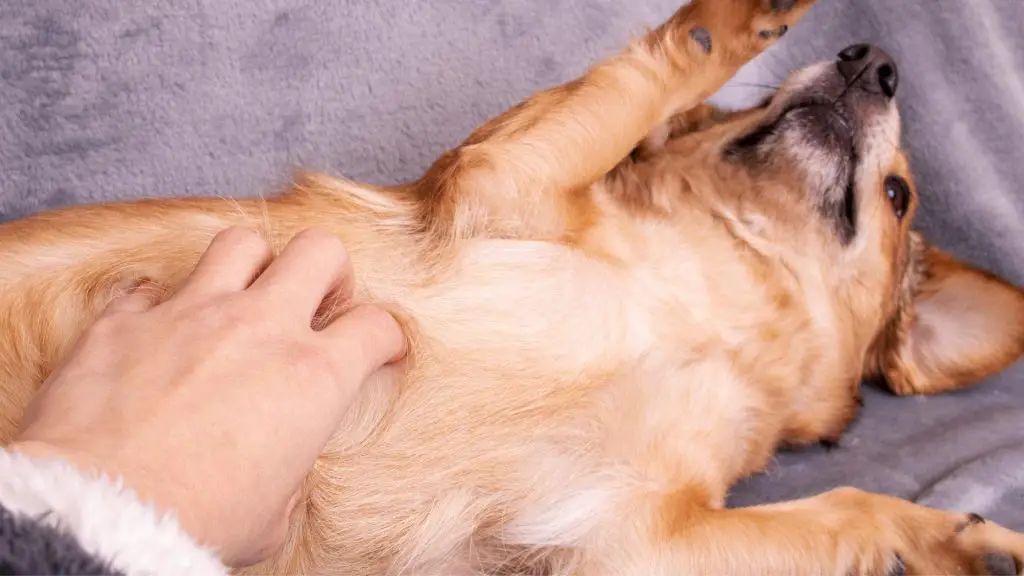
While black spots on your dog’s nipples are usually nothing to worry about, there are a few exceptions. In some cases, they can be a sign of a more serious problem.
Here are a few warning signs to be aware of to spot potential dangers:
Black Spots Will Not Go Away
If the black spots do not go away after trying home remedies, it is important to see a vet. This is especially true if the black spots are getting bigger or spreading.
Black Spots Are Crusty Or Oozing
If the black spots are crusty or oozing, it could be a sign of infection or other health concern. Again, this should not be taken lightly and needs to be treated by a vet immediately.
Black Spots Are Accompanied By Other Symptoms
Suppose the black spots are accompanied by other symptoms, such as hair loss, itching, diarrhea, redness, or anything else. In that case, it is important to see a vet. These could be signs of an underlying health condition that needs to be treated.
Odor, Swelling, or Discolorations
If there is an odor coming from the black spots, swelling, or discolorations, it could be a sign of infection or another health issue. Make sure to get your dog’s nipples looked at if black spots accompany any of these symptoms.
Black Spots Can Be Found In Other Areas
If black spots are found in other areas of your dog’s body, it could signify something more serious. Make sure to take them to the vet for an examination if this is the case.
When in doubt, always err on the side of caution and take your dog to the vet. They will be able to properly diagnose
How To Prevent Blackheads On A Dog
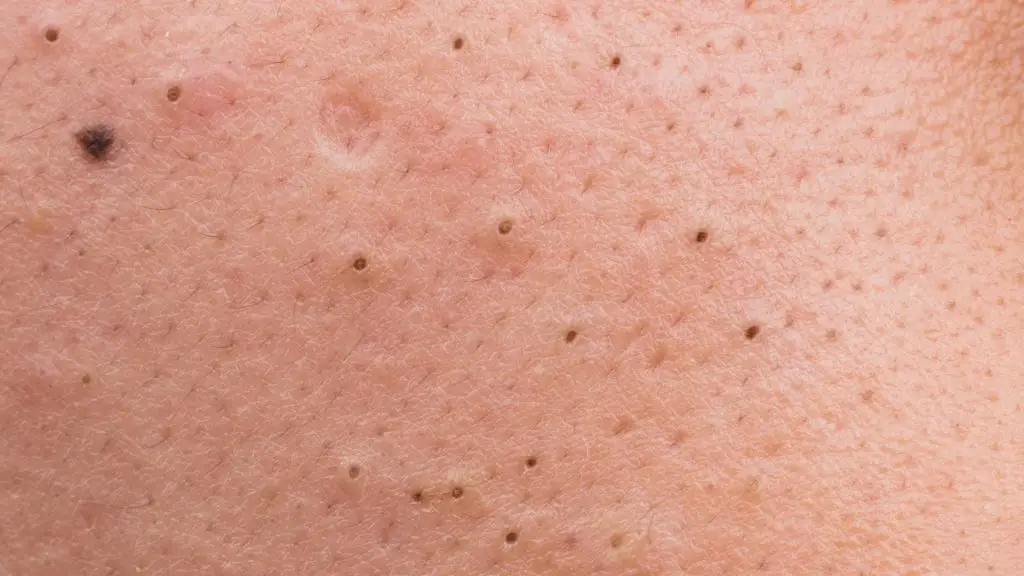
You can do several things to prevent blackheads from forming on your dog’s nipples and other parts of their body.
Here are some easy things you can do to help prevent the blackheads from forming on your dog’s skin:
More Water
One of the best things you can do for your dog’s skin is to make sure they are drinking enough water. This helps to keep their skin hydrated and less likely to form blackheads.
Probiotics
Probiotics are a great way to help improve your dog’s gut health. This, in turn, can help improve their skin health. Probiotics can be found in some dog foods or be given as a supplement.
Frequent Grooming
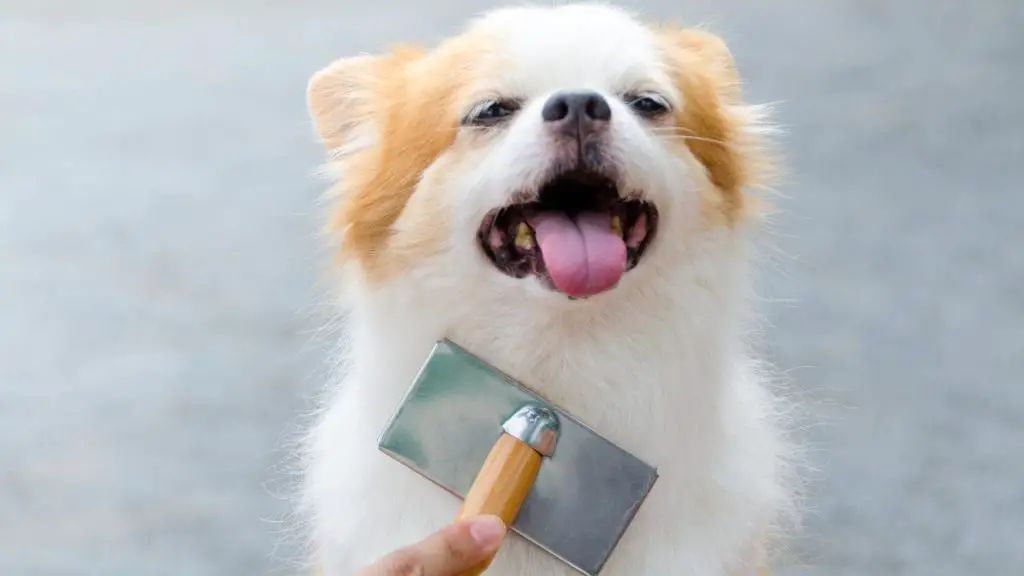
Regular grooming helps to remove dead skin cells and other things that can block pores. This, in turn, can help prevent blackheads from forming.
Regular Bathing
Bathing your dog regularly with a mild shampoo can help to keep their skin clean and free of irritants. This can also help to prevent blackheads from forming. However, do not over-bathe your dog as this can dry out their skin making things worse.
Stick to bathing your dog twice a month at most and a minimum once per month. Depending on your dog’s breed, they may need to be washed more or less often.
Healthy Diet
A healthy diet is important for your dog’s overall health and skin. Make sure to feed them a high-quality, balanced diet to help keep their skin healthy and prevent blackheads from forming.
As you can see, you can do several things to help prevent blackheads from forming on your dog’s nipples and other parts of their body. Following these simple tips can help keep your dog’s skin healthy and free of blackheads.
Other Frequently Asked Questions
Should I Squeeze My Dogs Blackheads?
This is a common question dog owners ask vets at our family clinic.
To answer this, I will ask a question, should you pop your own blackheads or pimples?
The answer to this is no; the same goes for your dog. Popping or squeezing blackheads can cause more irritation and inflammation. But unfortunately, it can also lead to infection and more problems for your dog. So aside from cleaning the skin where your dog’s blackheads reside, it’s best to leave them alone.
Can Blackheads On Nipples Harm The Dog?
No, blackheads on the nipples will not harm your dog. They may cause irritation, but they are not harmful. However, in some cases, the blackheads may be caused by an underlying health condition. Left untreated, they can lead to other problems such as infection.
It is important to clean the area around your dog’s nipples and remove any irritants that may be causing the blackheads. Keeping the area clean will help reduce the chances of the blackheads returning.
What Causes A Female Dog’s Nipple To Turn Black?
There are a couple reasons why your female dog’s nipples may turn black.
Here is a list of reasons a female dog’s nipples may turn black:
- Hormones: Hormonal changes can cause the nipples to darken in color.
- Pregnancy: Nipples may darken during pregnancy due to an increase in hormones.
- Nursing: Nipples may darken after nursing due to the increased blood flow to the area.
- Non-spayed dogs: Non-spayed dogs may have a higher level of the hormone progesterone, which can cause the nipples to darken.
- Spaying: Spaying can also cause the nipples to darken due to the removal of the ovaries, which produce progesterone.
- Age: As a dog ages, the skin around the nipples may darken due to sun exposure or other factors.
- Stress: Stress can cause the nipples to darken due to the release of the hormone cortisol.
- Irritation: Irritation of the skin can cause the nipples to darken.
- Infection: An infection of the nipples can cause them to darken.
- Cancer: Cancerous tumors can cause the nipples to darken.
Final Thoughts
Blackheads on dog nipples are not uncommon. In most cases, they are nothing to worry about and will go away on their own.
However, if the blackheads are severe or accompanied by other symptoms, it is important to see a vet.
There are many treatment options available for blackheads. The best treatment will depend on the underlying cause. In most cases, simple home remedies, such as special shampoo or cleanser, will be all that is needed. However, in some cases, antibiotics or other medication may be necessary.
The best way to prevent blackheads is to clean the area around your dog’s nipples by grooming them regularly. In addition, a healthy diet and plenty of water will also help to keep your dog’s skin healthy and free from blackheads.
Other posts you might find interesting:
Crusty Scabs Around Dogs Mouth: Why It Happens + What To Do
